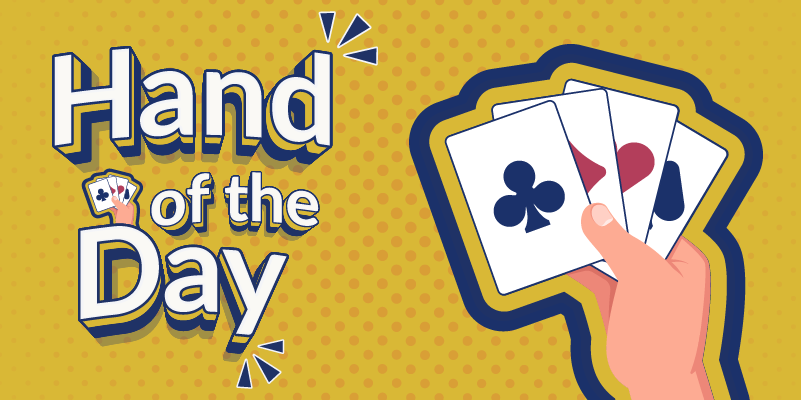



This conundrum was written by Patrick O'Connor and was originally published in the book A Second Book of Bridge Problems - you can find out all about it further down the page.
You are South. After a simple auction you are declarer in 3NT.
The lead is the ♥Q by West.
How do you plan to play the hand?
The first thing to do in a notrump contract is to count your winners. You have the ♥A and ♥K — that’s two, then the ♠A and ♠K — that’s two more, and the ♦A and ♣A bring the total to six. So you need to find three more tricks. The obvious source of extra tricks is the club suit where you have all the honors except the king. In fact, you could finesse against the ♣K if it were with East.
Is that the best way to proceed?
Let’s follow that line mentally before playing a card. To take the club finesse, you need to win the first trick in dummy with the ♥A because that is the only entry to dummy. Then you will lead the ♣J and if East does not cover, let it run. If it wins the trick, you can continue with another club from dummy. If East has the ♣K you will win three club tricks and then set up a diamond trick to make your contract. If, however, the finesse loses to West’s ♣K, you can take the ♣A and ♣Q but the suit will be blocked — that is, you will not be able to access the other club winners in dummy and the contract will fail.
There is a better play. Win the first trick in your hand, retaining the ♥A in dummy. Then play the ♣A, ♣Q and a small club. At some stage West will win the ♣K but you will be able to get to dummy with the ♥A to reach the two established clubs. This way you will make four club tricks no matter which opponent has the ♣K.
Key Point
Play high honors from the short side to unblock a suit
Like the author's first book (A First Book of Bridge Problems, named Book of the Year for 2012 by the American Bridge Teachers Association), this sequel comprises fifty problems in declarer play and defense for the beginning or near-beginning player, presented in approximate order of difficulty. The problems are slightly more advanced than those in the first book. Experienced players recognize certain standard situations without having to work them out. This does not apply to novices, who spend a lot of mental effort on them. The aim of the book is to get novices to develop their recognition of these situations. The idea is to present bridge hands as the reader would encounter them playing at the table. Unlike in a textbook, where topics are introduced systematically, there is no clue as to what type of play is required. Winner of the 2014 ABTA Book of the Year of the Award in the Beginner/Novice category!




Play Ace and then Q OF Club to win minm 9 tricks